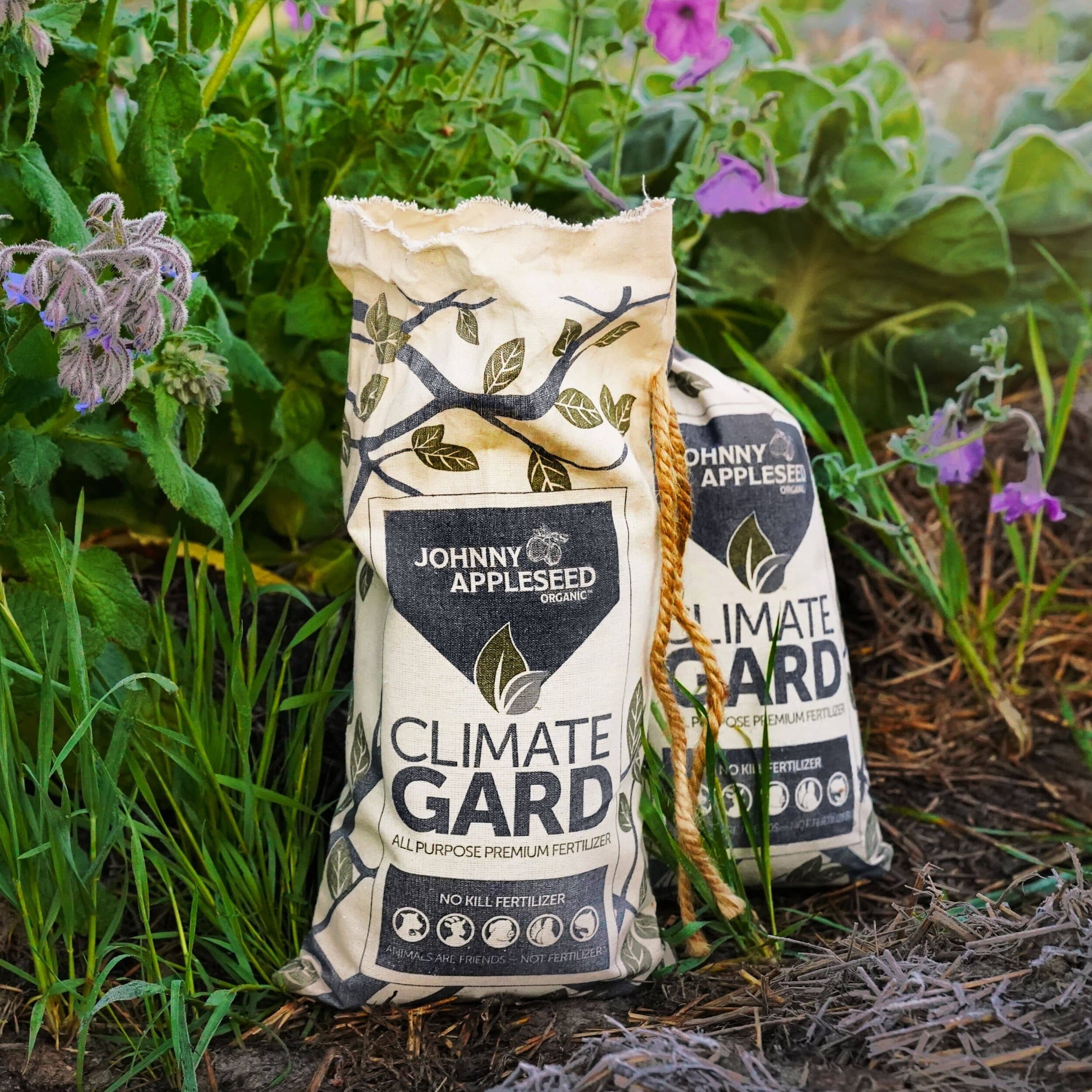The Eat-All Greens Garden
By Carol Deppe
The following excerpt is from Carol Deppe’s book The Tao of Vegetable Gardening (Chelsea Green Publishing, January 2015) and is reprinted with permission from the publisher. It has been adapted for the web.
It was mid-March, which in my region features variable weather. There are enough days with enough warmth to start some of the more hardy of the cool-weather-loving greens. However, many days are cold, and freezes can happen right up until about mid-May. What could I grow in a couple of months running from mid-March to mid-May? What might grow really happily and quickly at that time of year and produce a large amount of biomass for the space? I chose ‘Green Wave’ mustard. I love mustard greens, especially ‘Green Wave’. And at that time in my life I just could not get enough mustard and other high-nutrient leafy cooking greens.
A New Way to Garden
So I broadcast ‘Green Wave’ mustard seed over the entire bed. By that I mean I sprinkled the seed as uniformly as possible over the entire surface of the bed rather than making furrows or rows. To bury the seed very shallowly I gently bounced a rake over the surface of the bed so that I was disturbing the soil just a little, but not actually raking. (An ordinary leaf rake with springy metal fingers is what I used.) Then I let the seeds, the compost, and the rain do their work.
Usually in the past I had grown ‘Green Wave’ into fairly big plants and harvested individual full-sized but young leaves for my soups, stews, or messes o’ greens. The huge leaves are bright green, savoyed, and blazingly hot raw. However, when chopped and dropped into boiling water the leaves lose all their heat and have a delicious flavor. The stems of ‘Green Wave’ grown in this way are tough and unpalatable. As with kale, you have to pick the individual leaves. The broth left after the leaves cook in water is also delicious and makes good tea, soup, or stew. And there is real substance to ‘Green Wave’ leaves. A big bunch of spinach leaves cooks into just a few bites. An equal-sized bundle of ‘Green Wave’ mustard cooks down to much more food.
In addition, the leaves of ‘Green Wave’ are several-fold bigger, often ten times or more larger than the biggest spinach leaves, so it is much easier to harvest serious amounts. ‘Green Wave’ also grows much faster than spinach. And in my opinion, as a cooked green, it tastes much better. The leaves of ‘Green Wave’ are too hot to use raw, however. But this has an advantage. The leaves are too hot for rabbits and deer. Only a creature who can cook can use ‘Green Wave’ mustard. So when you plant it you get the whole crop.
After about eight weeks my driveway raised bed had become a solid uniform stand of ‘Green Wave’ about 10 inches (25 cm) high. These plants were quite different from my usual crop of ‘Green Wave’, however. The entire top 7 inches (18 cm) of all the plants was soft, succulent, and edible, the main stem as well as all the leaves. I simply took a serrated kitchen knife and pan out to the garden and chopped off swaths of everything in the bed above 3 inches (7.6 cm) high.
Then I took those bunches of greens inside, ran a knife through them to cut the greens and stems into 1-inch (2.5 cm) sections, and dropped them into my soup or stew during the last minute of cooking. Or I dropped them into boiling water, boiled them a minute, then drained them and dressed them with something delicious for a mess o’ greens. (Meat drippings, salt, pepper, and vinegar, for example. Or any combination I might use on salads.) I did not weigh the harvest; however, from subsequent experience I think I got at least 30 pounds (13.6 kg) of edible greens from this 12-square-yard (10-square-meter) garden. This was actually the first time in my life I had enough greens to be satisfied. I ate a huge mess o’ greens as the main course every day for a week, and froze enough to give me all the greens I wanted for much of the rest of the summer—all from a small shallow bed on top of part of a concrete driveway, and all in only two months.
That was my first eat-all greens crop.
It had cost me no time or effort in weeding or watering. In fact I had done no work other than sowing the seeds and harvesting. And the harvesting and kitchen prep was also a small fraction of what was required for most greens. I cut off the top 70 percent of all the plants, and the main stems and all the attached leaves were all prime and edible. Because of the erect form of the ‘Green Wave’ variety, there was no mud or dirt on the harvested food, so I could just cut it up and use it without washing. The few small, yellow, older unpalatable leaves were down below the harvest line. I had happened to grow the plants in weed-free compost, but ‘Green Wave’ can perform equally well in any good garden soil. At the right time of year ‘Green Wave’ grows so vigorously it shades out any weeds.
Gardening Tao | Harmony & Simplicity
Up until that first eat-all greens crop I had always accepted a fair amount of labor as the cost of homegrown vegetables. Suddenly I had a new vision—I wanted gardens and garden crops that produced huge amounts of food on little or no labor. I wanted to just sow the seeds and go away, then come back at some point later and harvest. With the right varieties of greens, and the eat-all growing pattern, it turns out that this no-labor pattern is actually possible. During periods when there isn’t enough rain, watering will be necessary. But weeding can be avoided, as can most of the labor usually associated with harvesting and kitchen prep. The individual eat-all crops are not only far more productive than the ordinary crops and styles of growing other greens, but in addition, you can plant a number of eat-all crops on one bed in a season.
For example, the right eat-all varieties can produce up to about 4.5 pounds/square yard (2.45 kg/square meter) of greens, with half to three-quarters of that amount being easy and normal. This means a single small bed with 12 square yards (10 square meters) of good garden soil in my climate can produce up to about 54 pounds (24.5 kg) of edible greens in eight weeks. And multiple crops per year are possible—about four in the Willamette Valley of Oregon, making for up to 216 pounds (98 kg) from the single small bed in the early-spring-to-late-fall growing season. Even if I lose about half the potential production through various imperfections, and I am too sloppy and disorganized to get four crops but instead get only three, that still comes out to 81 pounds (47 kg).
Furthermore, in many cases, the eat-all greens growing space doesn’t actually cost any garden space. Their rapid growth and shade tolerance makes eat-all greens the ideal crop for interplanting or catch cropping, that is, using space that is available only part of the season until the main crop gets big enough to need it.
Here in the Willamette Valley I sometimes plant eat-all greens crops in mid-March on the land where I intend to plant tomatoes or squash later on. I harvest the greens in mid-May, then plant the warm-season crops. Eat-all crop beds combine naturally with big viney squash. Just put them in the middle between the rows. Harvest two months later and let the squash vines take over.
Eat-all greens should also be the ideal crops for growing in shallow containers on balconies or in rooftop gardens.
The greens growing style known as “cut and come again” shares some features with the eat-all method. In both methods the seed is broadcast in beds. And with both you clear-cut the entire top of the patch instead of picking individual leaves or pulling whole plants. With “cut and come again,” however, the seed is broadcasted much more densely, and the plants are usually harvested when quite small—usually about 4 inches (10.2 cm) high. The total biomass produced by “cut and come again” is small, probably much less than 10 percent of what is produced by the eat-all method. The intent of the “cut and come again” method is usually to produce very young, tender prime salad greens. The “cut and come again” part refers to the fact that after the first harvest (with appropriate varieties), you may be able to get an entire second crop. Usually, however, the second crop has smaller, tougher leaves and more stems and isn’t very good quality compared with the first crop. So many people harvest just one crop from each planting.
Microgreens are also broadcast into beds and harvested by clear-cutting the entire top of the patch. However, they are sown even more densely than for the “cut and come again” method, and produce even smaller crops of even younger greens for salads.
A Gardening Game Changer
I believe the eat-all style of growing greens and the eat-all varieties will be a game-changer for all gardeners, but especially for those with small gardens. In addition, the high nutrient content of the eat-all greens crops as well as the very high yield makes them an ideal choice for growing in community or public gardens or in “food deserts” where greens are especially needed and are unavailable. And because of the very low amounts of labor for harvesting big batches at once and the minimal labor in the kitchen, the eat-all greens are also ideal for freezing. And it turns out that most also make good dried greens for use either in soups and stews or as herbal teas. Many who have very tiny gardens or short growing seasons may now be able to produce a year-round supply of greens for their families when they have never before been able to even imagine doing so. It should also be possible to produce a much larger variety of commercial frozen greens at more economical prices than the spinach or occasional package of turnip greens, the only frozen greens typically available.
Sign up for Newsletter
Follow Us on Social
Cutting-edge microbiology
No kill formula
Superior plant nutrition derived from the most ethical, sustainable sources available.
Produces the same results as conventional fertilizers without the negative environmental impacts.
Each ClimateGard pellet is infused with micronutrients, silicon, humic acid and a high-performance blend of living bacteria and fungi.
Delivered in an environmentally friendly organic cotton bag with a compostable inner liner.
Will continue to enrich your soil long after application.
$39.95 for 7.5 pound bag | $69.95 for 15 pound bag.





